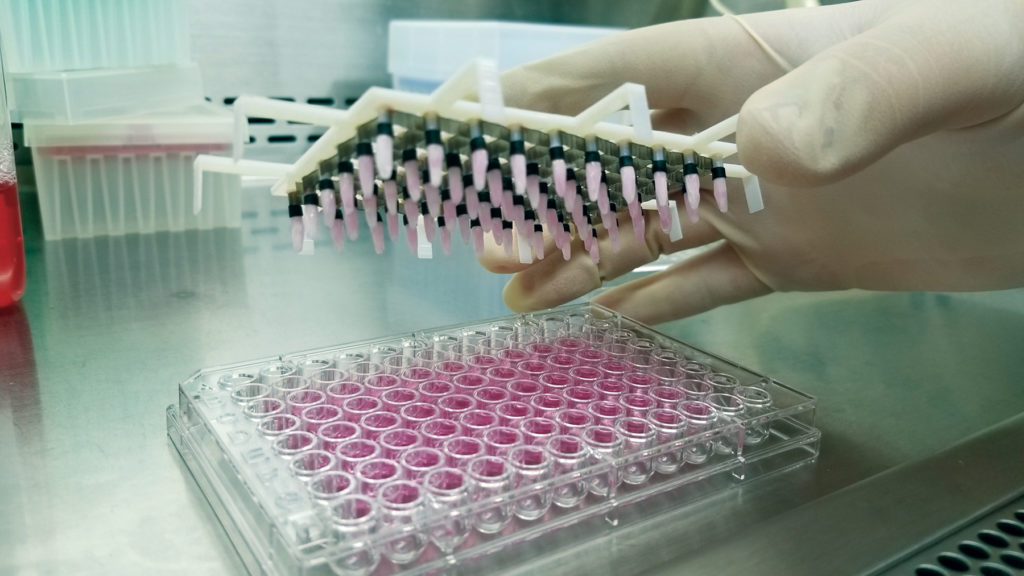Complex patient models, including organoids and organ-on-a-chip devices, have been developing tremendously fast over the last decade.1 Organoids are 3D multicellular in vitro tissue constructs that functionally and genetically mimic portions of in vivo organs. Properly supplemented media allow the controlled expansion of stem cells into more stem cells along with daughter cells with more differentiated phenotypes and specific functions.
In contrast, most cell lines adapt to new in vitro conditions and change their gene expression profiles when compared to their tissue of origin. This is problematic if the goal is to use them as models to represent patients.
Challenges
Patient-derived organoids are genetically and functionally similar to the patient tissue from which they were derived. To maintain this patient relevance and keep the organoids stable, culture conditions rely on a specific growth factor mix and technology. These requirements are quite strict and differ from those commonly used for standard cell lines. Growing organoids requires the correct reagents and training.
“Organoids are not very forgiving. Their culture is more elaborate and requires more attention to detail than growing cell lines,” says Robert Vries, PhD, CEO, HUB. “Ten years ago obtaining reagents and organoids at scale was logistically difficult. This has been largely resolved; however, specific technical expertise and access to reagent suppliers are still required.”
HUB and their academic partners have helped to educate the scientific community by providing protocols, access to training, and supplier lists. Many academic groups collaborate with suppliers to ensure reagents are tested and work properly while new organoid cultures are being developed.
“The technical challenges of growing organoids can be overcome by using the resources the organoid community has put together. Scientists need to be aware of where to find resources and follow the protocols provided,” emphasizes Vries.
Ensuring the stability of organoids
Organoids should not change genetically or functionally simply by passaging them in vitro. Nevertheless, as standard quality control measures, HUB sequences the initial patient tissue and, subsequently, the organoids to ensure stability over time.
“Functionally, drug response and other assays have also demonstrated that organoids are similar to the corresponding patient. The use of organoids as a model system to predict patient response has been validated in preclinical studies,” says Vries.
Since their first development, refinement of culture reagents, plates, and plastics as well as the optimization of screening platforms have facilitated the adoption of organoids in functional assays and drug screenings.
Today the emerging field of microfluidics supports organ-on-a-chip devices. Still, many organ-on-a-chip companies can offer the technology platform to build the infrastructure but not the biology to grow an organoid from patient material. Many original devices used primary cells from patient tissue but now device manufacturers are introducing more organoids. “Device design and biology are two sides of a coin. When we put these together it makes a good system,” comments Vries.
Advice
“It sounds a bit simple but you help yourself by just following the protocols,” advises Vries. “I would not be too imaginative. Make sure it works and then move from there. Organoids are more complex than traditional culture.”
When building an organoid-based drug development platform keeping validation front-of-mind is crucial. “It is commonly accepted that organoids are advanced models that better mimic patient tissue biology. However, for their adoption in applications that can impact patient treatment, such as in personalized medicine approaches, we need to demonstrate how faithfully they mimic the corresponding organ functionality, pathology, and, importantly, the response to treatment,” says Vries.2
“When we developed the first organoid, we were not expecting it to recapitulate organ function as effectively as it turned out to be and, certainly, we were not expecting the high degree of conservation of drug response compared to the corresponding patient. But we are aware that organoids are still an in vitro model system and therefore, as for all models, they need to be critically interrogated,” continues Vries. “Although technology developments are certainly on the horizon, we should refrain from the tendency of asking over-complicating questions that cannot be properly addressed with the currently available tools.”
To successfully incorporate organoids into R&D or drug development programs, scientists should take a pragmatic approach and focus on predictiveness. “You want to be able to break down complex questions such as disease biology into smaller components and rely on the fact that with organoids you are adopting a patient-derived model that mimics a lot of the patient’s physiology,” says Vries.
This approach leads to better designed studies. The benefits of this in vitro model outweigh the initial challenges and training. Genetically- and functionally-stable organoids are an accessible and affordable technology.
References
- Liu, L, Yu, L, Li, Z, et al. 2021. Patient-derived organoid (PDO) platforms to facilitate clinical decision making. J Transl Med 19, 40. doi.org/10.1186/s12967-020-02677-2
- Wensink, GE, Elias, SG, Mullenders, J, et al. 2021. Patient-derived organoids as a predictive biomarker for treatment response in cancer patients. npj Precis. Onc. 5, 30. doi.org/10.1038/s41698-021-00168-1



